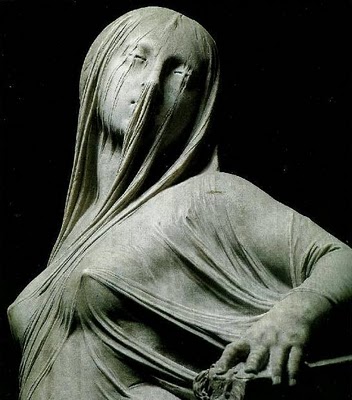Naples

If Othello were set in Naples...
It was in Naples that Carlo Gesualdo, Prince of Venosa (and celebrated musician) murdered his beautiful wife, Donna Maria d’Avalos, and her lover, in 1590. No doubt Gesualdo relied on some assassins to do the bloody work. It is all the more interesting that later he became one of the most celebrated composers of his time.
The murder occurred at the Palazzo Sangro di San Severo in the center of old Naples, across the street from the church known as San Domenico Maggiore.

That's not Maria above, although it could be. That is the most erotic religious statue I know of, La Pudicizia (The Veiled Truth) by Giuseppe Sanmartino, from around 1750. It is displayed nearby, behind the Palazzo, in the Cappella Sansevero, a chapel with some other famous artwork, including The Veiled Christ, but this is better. Pudicizia can be translated as Modesty or Chastity but that is not what springs to mind.
A short walk away is the Church of Gesù Nuovo (below) , where Gesualdo is buried, or said to be buried.

Then there is the town of Gesualdo, shown below. It is east of Naples and it is the ancestral town of Carlo Gesualdo, and he fled there, promptly chopping down all the trees (like Macbeth) so he could see his enemies coming for him.

In the town is the Church of Santa Maria delle Grazie, where there is an unusual painting titled Perdono di Carlo Gesualdo ("Carlo Gesualdo's forgiveness") by Giovanni Balducci, from 1609. The question is: who is being forgiven? Did Gesualdo (shown bottom left) feel remorse for the murders (his wife and her lover are being lifted out of Hell)? It appears that he is doing the pardoning, but is it prompted by guilt?

